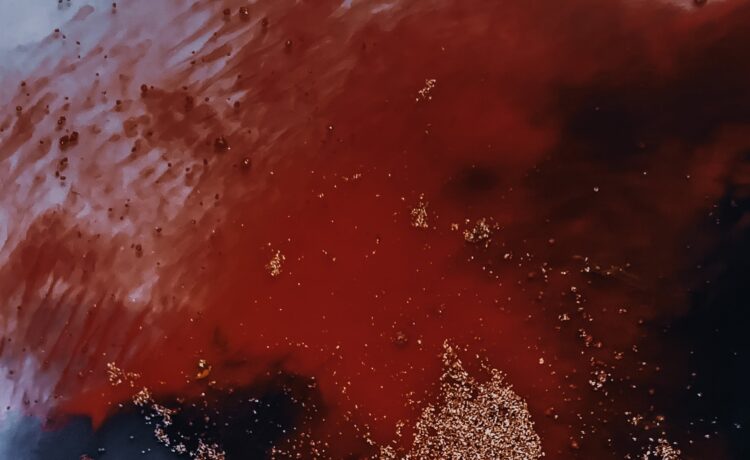Resin art has taken the creative world by storm, offering artists a unique and versatile medium to express their creativity. Whether you’re a seasoned resin artist or just diving into this mesmerizing craft, one of the key decisions you’ll face is choosing between liquid pigment and powder pigment for your resin masterpieces. But fear not! In this blog post, we’ll delve into the differences between these two types of pigments, explore their pros and cons, and provide some valuable tips to help you make an informed decision. So grab your apron and let’s embark on a colorful journey through the world of liquid versus powder pigment for resin art!
What is Resin and How is it Used in Art?
Resin, in the context of art, is a synthetic material that starts as a liquid and hardens into a solid form. It is commonly used as a medium for creating stunning artworks due to its glossy finish and versatility. Resin can be transparent or opaque, allowing artists to experiment with different levels of transparency and opacity in their creations.
One popular technique involving resin is known as “resin pouring,” where the artist pours layers of resin onto a surface, often combined with pigments or other additives. This technique allows for beautiful color blending and creates mesmerizing effects when the resin cures.
Another common use of resin in art is for coating and preserving artwork. By applying a layer of clear resin over paintings or mixed media pieces, artists can protect their work from dust, UV rays, and other environmental factors while enhancing its visual appeal with a glossy finish.
Resin art opens up endless possibilities for creativity – from creating unique jewelry pieces to crafting intricate sculptures. Its ability to capture light adds depth and dimension to artwork, making it truly captivating.
So whether you’re an experienced artist looking to explore new horizons or an aspiring creative enthusiast wanting to dive into the world of resin art – get ready to unleash your imagination! Resin offers boundless opportunities for expression through vibrant colors, fascinating textures, and breathtaking finishes. Let’s discover how liquid pigment versus powder pigment plays into this artistic journey!
Liquid Pigment vs. Powder Pigment: What’s the Difference?
When it comes to adding color to resin art, there are two main options: liquid pigment and powder pigment. But what exactly is the difference between the two? Let’s dive in and explore!
Liquid pigment, as the name suggests, comes in a liquid form. It is typically pre-mixed with a carrier medium, making it ready to use right out of the bottle. This makes it incredibly convenient for artists who want a hassle-free coloring option.
On the other hand, powder pigment consists of finely ground particles that need to be mixed with a compatible medium before they can be used with resin. This gives artists more control over the intensity and opacity of their colors since they can adjust the ratio of pigment to medium.
One advantage of using liquid pigment is its ease of use. Since it is already pre-mixed, you don’t have to worry about measuring or mixing ratios; just squeeze out your desired amount and mix it into your resin.
Powder pigments offer versatility in terms of color customization. By adjusting the amount of powder added or experimenting with different mediums, artists can create an array of unique hues and effects that may not be possible with liquid pigments alone.
However, one downside to consider when using liquid pigments is that they may affect curing time and consistency due to their additional moisture content. This means you may need some trial and error before finding the perfect balance for your project.
In contrast, using powdered pigments allows for precise control over consistency since you have full control over how much medium you add. However, extra care must be taken during mixing as powders can become airborne easily if not handled properly – no one wants colorful sneezes!
Choosing between liquid or powder pigments comes down to personal preference and specific project requirements. If convenience is key for you or if you’re just starting out in resin art, then liquid pigments may be the way to go. However, if you’re seeking
Pros and Cons of Using Liquid Pigment for Resin Art
When it comes to resin art, one of the key decisions artists face is whether to use liquid pigment or powder pigment. In this blog post, we’ll explore the pros and cons of using liquid pigment for resin art.
One of the major advantages of using liquid pigment is its ease of use. Liquid pigments are ready to go right out of the bottle, so there’s no need for measuring or mixing. This makes them a great choice for beginners or artists who prefer a hassle-free process.
Another benefit of liquid pigments is their vibrant color payoff. Since they are pre-mixed, you can expect consistent and intense colors in your resin artwork. This allows for greater control over your desired shades and hues.
Liquid pigments also offer excellent transparency options. They can be easily diluted with clear best pigments for epoxy resin to achieve transparent effects that add depth and dimension to your artwork.
On the downside, liquid pigments tend to be more expensive compared to powder pigments. Additionally, since they come in bottles with droppers or squeeze tubes, it may be challenging to achieve precise measurements if you’re looking for specific ratios or exact color formulas.
Furthermore, some artists find that liquid pigments have shorter shelf lives than their powdered counterparts. It’s important to store them properly and check expiration dates regularly to avoid any disappointment when reaching for your favorite colors.
Pros and Cons of Using Powder Pigment for Resin Art
When it comes to creating stunning resin art, using powder pigment can offer a unique set of advantages. One major benefit is the intense color payoff that powder pigments provide. Because they are highly concentrated, you can achieve vibrant and rich hues with just a small amount.
Another advantage of using powder pigment is the ability to create custom colors by mixing different powders together. This gives artists more control over their color palette and allows for endless possibilities in their creations.
Additionally, using powder pigment allows for greater precision in achieving specific effects such as gradients or marbling. The fine particles of the pigment evenly disperse throughout the resin mixture, resulting in smooth transitions between colors.
However, it’s important to consider some potential drawbacks when working with powder pigments. They can be challenging to mix into the resin without causing clumps or streaks. It requires careful blending and thorough stirring to ensure even distribution.
Furthermore, because powder pigments are dry substances, they have a tendency to become airborne during application. This means you need to take proper precautions such as wearing a mask and working in a well-ventilated area to avoid inhaling any particles.
Due to their concentration, powder pigments can be more expensive compared to liquid alternatives. Artists on a tight budget might find that liquid dyes are more cost-effective for their projects.
Factors to Consider When Choosing Between Liquid or Powder Pigment
When it comes to resin art, choosing between liquid and powder pigment can be a tough decision. Both options offer their own unique advantages and challenges. Here are some factors to consider when making your choice.
One major factor is the level of control you desire over the color intensity. Liquid pigments tend to provide more vibrant and saturated colors with less effort. On the other hand, powder pigments allow for greater customization as you have more control over the amount used.
Think about convenience and ease of use. Liquid pigments are generally ready-to-use straight out of the bottle, making them ideal for beginners or artists who prefer a hassle-free experience. Conversely, powder pigments may require mixing with a medium before they can be added to resin.
Another important consideration is cost-effectiveness. Generally speaking, liquid pigments tend to be more expensive than their powdered counterparts due to their pre-mixed nature. If you’re on a budget or planning on using large quantities of pigment in your artwork, opting for powder pigment might be a more economical choice.
Additionally, take into account compatibility with different resin types. Some liquid pigments are specifically formulated for certain resins and may not work well with others. Powdered pigments usually have broader compatibility across different types of resins.
Consider personal preference and artistic vision. Experimentation is key in resin art! If you enjoy experimenting with various techniques and effects in your artwork, both liquid and powder pigments offer endless possibilities.
There isn’t necessarily a right or wrong choice between liquid or powder pigment – it all depends on your specific needs as an artist! Take these factors into account when deciding which option will best help you achieve your desired results in resin art.
Tips for Mixing and Using Liquid and Powder Pigment with Resin
When it comes to mixing and using pigment with resin, whether liquid or powder, there are a few tips that can help you achieve the best results. Here’s what you need to know:
1. Measure accurately: Whether you’re using liquid or powder pigment, it’s crucial to measure the right amount for your resin mixture. Follow the manufacturer’s instructions carefully and use measuring tools such as syringes or scales to ensure precise measurements.
2. Mix thoroughly: When adding either liquid or powder pigment to your resin, make sure to mix it thoroughly until the color is evenly distributed. For liquids, stir gently but consistently; for powders, consider using a small sieve when adding them into the mixture to prevent clumps.
3. Experiment with ratios: Depending on the desired intensity of color in your artwork, you may want to experiment with different ratios of pigment to resin. Start by adding a small amount and gradually increase until you achieve your desired shade.
4. Don’t overload: While it may be tempting to add more pigment than necessary for vibrant colors, keep in mind that overloading can affect the curing process of resin and lead to surface imperfections or discoloration. Use pigments sparingly at first until you become familiar with their behavior in resin.
5. Test before pouring: Before committing your entire project to one color mix, consider doing a small test pour on a separate piece of material or even an extra mold if available. This allows you to evaluate how the colors interact and adjust if needed without compromising your main project.
6.Store properly: Both liquid and powder pigments should be stored in cool, dry places away from direct sunlight when not in use. Proper storage helps maintain their quality over time so that they continue performing well in future projects.
By considering these tips when working with both liquid and powder pigments for resin artistry, you’ll be able to create stunning pieces that showcase your creativity and skill. Whether





